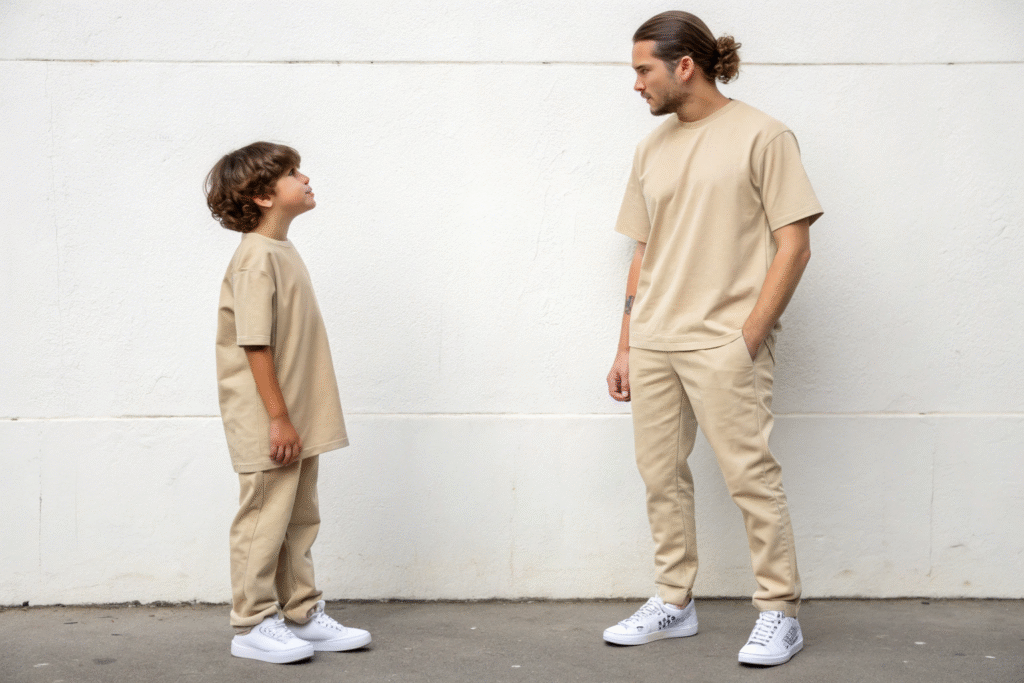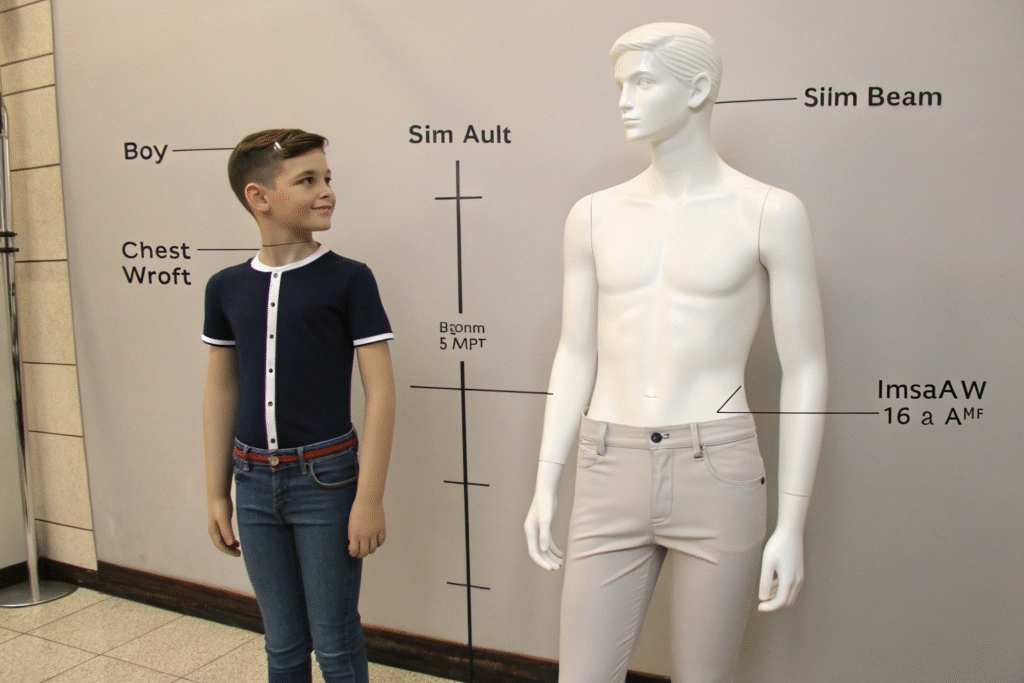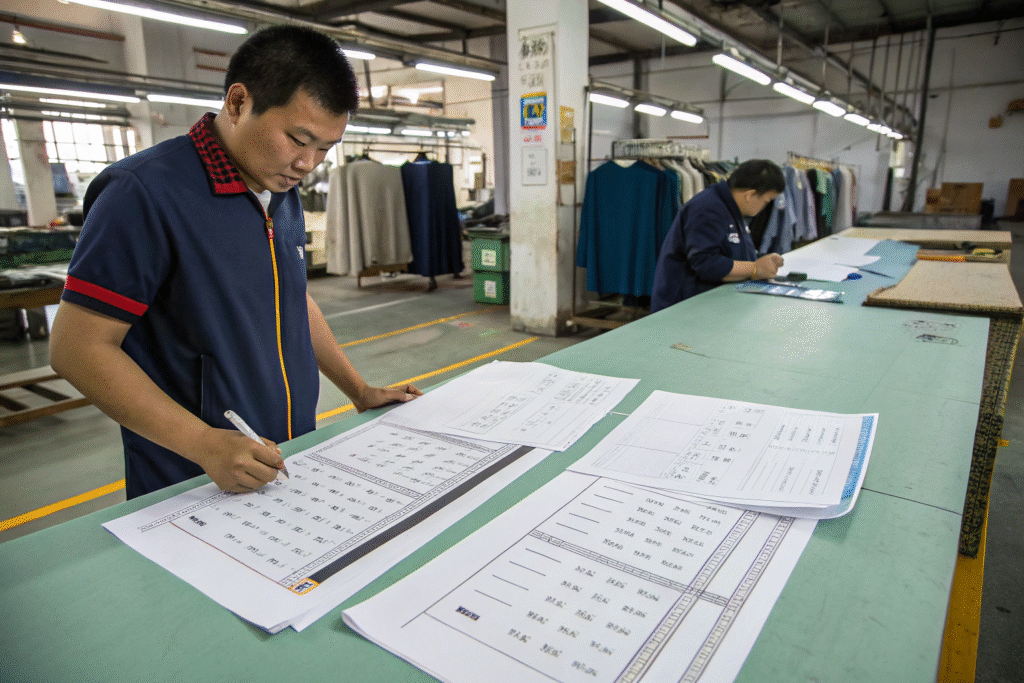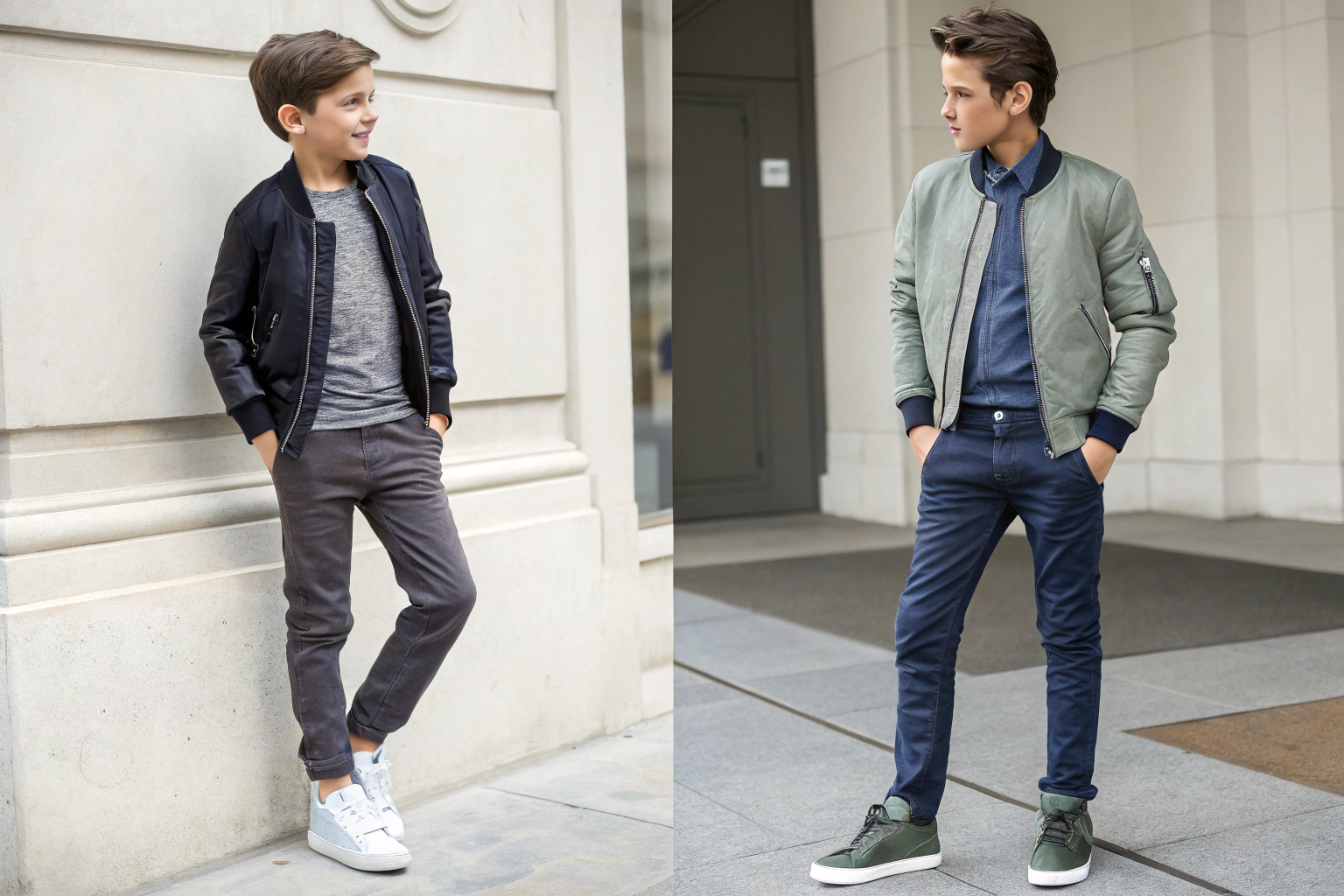If you’re shopping for a boy who’s outgrowing children’s sizes, or you’re an adult male with a smaller frame, it can be tricky figuring out how boys’ sizes translate into men’s sizing. This is especially true around size 12 — it’s one of the last stops before jumping into adult sizes. Many buyers, like my international clients, often ask about the precise match between these two sizing systems. The good news is, there’s a general conversion point that works across most brands.
What’s the men’s equivalent of boys size 12?
Boys grow fast—especially around age 10–13. At this stage, many start to outgrow standard children’s sizes but still don’t quite fit into adult ones. Parents and brand owners often ask: Is there a clean size match between kids and adult clothes?
A typical boys’ size 12 is close to a men’s XXS or XS, depending on the brand and garment type. For fitted t-shirts, slim-cut pants, or unisex outerwear, a men’s XXS will generally offer a comparable fit for a boy wearing size 12. But keep in mind: men’s sizing assumes broader shoulders and longer limbs.

How does a boy’s 12 size compare to men’s t-shirts?
Boys’ 12 tops usually have a chest around 30 inches. This lines up with a men’s XXS or snug XS shirt, which ranges from 30–32 inches in the chest. The main difference? Length. A men’s tee may be too long in the torso or sleeves for some 12-year-olds.
Can boys size 12 pants fit into men’s jeans?
In waist size, boys’ 12 pants (about 26 inches) match men’s XS jeans. But most adult jeans assume longer legs. You’ll likely need to roll cuffs or tailor length. Consider slim-fit men’s joggers or youth-cut jeans labeled “husky” as alternatives.
Why is there no exact match between youth and men’s sizing?
Clothing manufacturers don’t use one universal standard—especially across youth and adult sizes. This often frustrates both parents and clothing importers. There are differences in body shape, garment cut, and design intent.
Even if a boy’s size 12 matches men’s XXS on paper, the fit may still feel different. Adult clothing includes allowances for shoulder width, torso length, and hip structure. Youth sizing, by contrast, favors shorter proportions and smaller armholes.

Why do sleeves and shoulders matter so much?
Because most boys have narrower shoulders and shorter arms than adult men—even slim ones. If a child wears a men’s size tee, the shoulder seams may droop and sleeves could overwhelm their arms, creating an awkward fit.
Is it safer to size up or stay in youth cuts longer?
If a child is tall or bigger than average, trying men’s XXS or XS may help. But for comfort and movement, youth styles tailored for growing frames still offer better everyday wear. Especially for activewear, pajamas, and outerwear.
How do brands handle the tween sizing gap?
The tween phase—between childhood and adolescence—creates a huge gap in the fashion industry. Kids are ready for more mature styles, but their bodies don’t match adult sizes yet. Brands handle this differently.
Some use “teen” or “junior” labels that blend youth sizing with a touch of adult fit logic. Others create transitional cuts like “12 husky” or “14 plus” to cover extra room without switching to full adult grades.

What’s the best clothing type to try first in men’s sizes?
Start with flexible items like hoodies, oversized tees, or joggers. These are forgiving in fit. Avoid button-ups, suits, or structured coats early—adult cuts may look sloppy or restrictive on smaller frames.
Do any brands do this transition better?
Yes. American Eagle’s Aerie, H&M Kids+, and Zara Kids offer well-graded tween options. For sourcing, Chinese factories that offer custom grading (like ours at Fumao Clothing) can bridge this sizing gap professionally.
How can B2B buyers convert youth sizes to adult SKUs?
For bulk buyers and importers, this sizing transition must be handled with precision. Mixing youth and adult sizing on the same PO can cause confusion, returns, or warehouse headaches. That’s why we guide our clients with matched SKU charts and fit samples.
We recommend creating an internal sizing conversion table when your product line spans both youth and adult segments. It reduces errors and ensures consistency in rebranding and resale markets.

What should a conversion chart include?
It should match chest, waist, hip, height, and inseam. You can use either inches or centimeters—but stay consistent. Note that youth sizes use even numbers (e.g. 10, 12, 14), while men’s use S, M, or waist/inseam pairs.
Can manufacturers help manage this?
Good ones can. At Fumao, we’ve helped brands segment youth and adult lines using the same fabric but different cuts. We prepare tech packs for both and advise on labeling, fit models, and even marketing messaging based on region.
Conclusion
Whether you’re a parent shopping for a fast-growing tween or a B2B buyer managing both youth and adult fashion lines, understanding the conversion between boys’ size 12 and men’s sizes is key. While men’s XXS or XS often matches in chest or waist, the difference lies in fit, length, and structure.
There’s no perfect 1-to-1 translation—but with the right supplier (especially one offering flexible size grading and fit support), you can bridge this gap confidently. As a seasoned kids’ wear manufacturer, I’ve guided dozens of partners through this process, ensuring their product mix remains seamless across age ranges.










